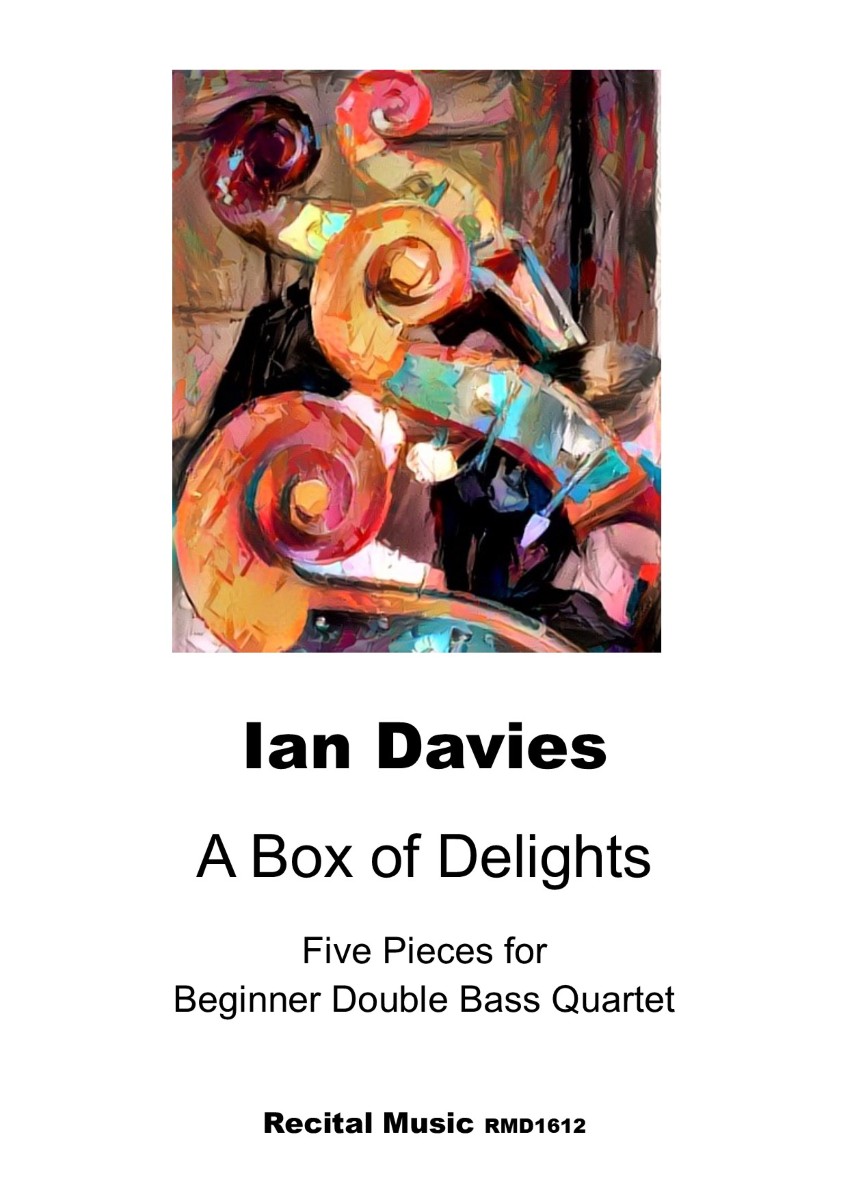Your basket is currently empty!
Songs of Old Mexico
Description
Songs of Old Mexico is a suite of five exciting and vibrant pieces aimed at the intermediate bass quartet. Ideal as study and recital repertoire, …there are solo opportunities for each bassist, exploring a wide range of textures and timbres across the range of the double bass.
It has been my pleasure to work for several years now with a student bass quartet comprised of pre-teen bassists of Mexican descent. Due to the fact that the four of them have been consistent in their practice and rehearsals and audience response to their public performances has been heart-warming, I felt moved to find a way to embellish their repertory with something that could reflect their heritage. I decided to arrange for them five well known traditional folk songs which I believe reflect strongly the character of the Mexican culture.
1. Cielito Lindo
In Hispanic circles the phrase ‘Mi Cielo’ (My Sky) is used often as a term of endearment, and this song title might be loosely translated as ‘Lovely Sweet One’. Even though the song’s origins have been traced back to the 1700s with references to the feared bandits of the Sierra Morena Mountains of Spain, Mariachi bands long ago laid claim to this song, and it is today thought of internationally as the theme song of Mexico.
2. Las Mañanitas
A staple of Mexican folk repertory, one can expect this piece to be sung as the cake is cut at any typical Mexican birthday party. This particular song also plays an important role in the feast of Our Lady of Guadalupe, which is observed each December 12th. The vigil that takes place on the evening before is traditionally marked by an elaborate concert in many of the big churches, and Las Mañanitas, often sung by a famous Mexican artist, is perhaps the most anticipated song of the night.
3. La Adelita
The origins of this well-known folk song can be found in the Mexican Revolution of the early 1900s. The lyrics recount the story of a woman from Durango who follows the movement of (and in fact falls in love with) the revolutionary leader Francisco Madero. It is today associated with the many courageous women for fought for
the cause of the revolution in this crusade.
4. La Cucaracha
The lyrics of this song describe a cockroach who can no longer walk correctly because he has lost one of his hind legs, a symbolic criticism of a political leader. Apparently there is great difficulty in dating this song due to the immense number of verses that are associated with it (it would seem that history offers us no shortage of political leaders deserving our criticism), some of which date back as far as the Spanish defeat of the Moors in 1492. Be that as it may, the greatest number of verses seems to be associated with the Mexican Revolution of the early 1900s, and this song has become entrenched firmly in the Mexican tradition.
5. Jarabe Tapatío
Emerging as a dance form in the late 1700s, the ‘jarabe’ was especially popular in the central and southern parts of Mexico, and remained so into the early 1900s. The people of Guadalajara, Mexico’s second largest city, have acquired the nickname ‘Tapatio’, a word taken from the name for a monetary unit used in pro-Columbian times in that area. The song Jarabe Tapatio is closely associated with the Mariachi music that evolved in the Guadalajara vicinity, and even today every school child learns this tune. [Programme notes by Michael Montgomery]
R.R.P £10
Our Price £8.50
Shipping Costs: No shipping




